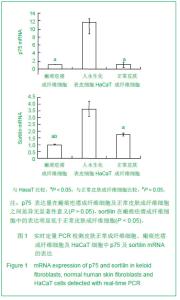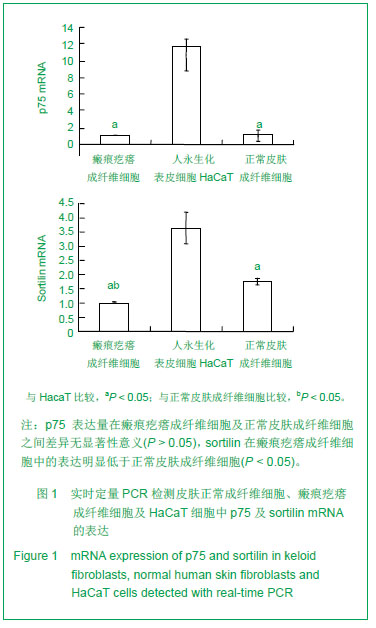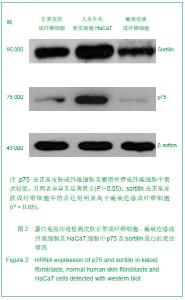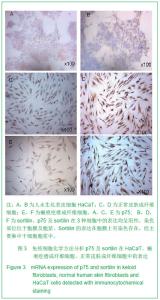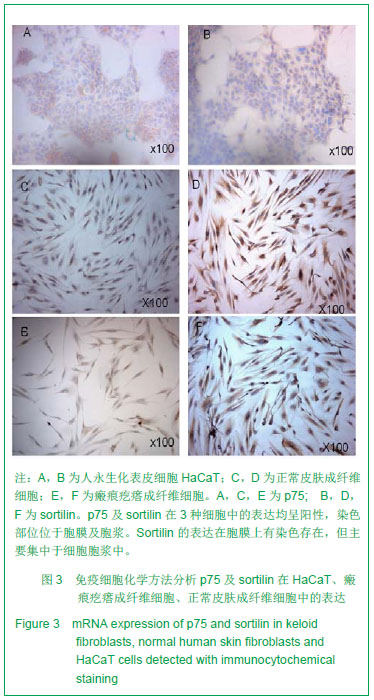| [1]Nykjaer A, Lee R, Teng KK, et al. Sortilin is essential for proNGF-induced neuronal cell death. Nature. 2004; 427: 843-848.[2]Cohen-Cory S, Dreyfus CF, Black IB.Expression of high- and low-affinity nerve growth factor receptors by Purkinje cells in the developing rat cerebellum. Exp Neurol. 1989;105(1):104-109.[3]Teng KK, Felice S, Kim T. Understanding proneurotrophin actions: Recent advances and challenges.Dev Neurobiol. 2010;70(5):350-359.[4]Hempstead BL. Dissecting the diverse actions of pro- and mature neurotrophins. Curr Alzheimer Res. 2006;3(1):19-24. [5]Yaar M, Grossman K, Eller M, et al. Evidence for nerve growth factor-mediated paracrine effects in human epidermis. J Cell Biol. 1991;115(3):821-828.[6]Kristensen M, Chu CQ, Eedy DJ, et al. Localization of tumor necrosis factor-alpha (TNF-alpha) and its receptors in normal and psoriatic skin: epidermal cells express the 55-kD but not the 75-kD TNF receptor. Clin Exp Immunol. 1993;94(2):354-362.[7]López SM, Pérez-Pérez M, Márquez JM, et al. p75 and TrkA neurotrophin receptors in human skin after spinal cord and peripheral nerve injury, with special reference to sensory corpuscles. Anat Rec. 1998;251(3):371-383.[8]Johansson O, Liang Y, Emtestam L. Increased nerve growth factor- and tyrosine kinase A-like immunoreactivities in prurigo nodularis skin-an exploration of the cause of neurohyperplasia. Arch Dermatol Res. 2002;293(12):614-619. [9]Dou YC, Hagstromer L, Emtestam L, et al. Increased nerve growth factor and its receptors in atopic dermatitis: an immunohistochemical study. Arch Dermatol Res. 2006;298(1): 31-37. [10]Petersen CM, Nielsen MS, Nykjaer A, et al. Molecular identification of a novel candidate sorting receptor purified from human brain by receptor-associated protein affinity chromatography. J Biol Chem. 1997;272(6):3599-3605. [11]Al-Shawi R, Hafner A, Olsen J, et al. Neurotoxic and neurotrophic roles of proNGF and the receptor sortilin in the adult and ageing nervous system. Eur J Neurosci. 2008;27(8): 2103-2114. [12]Kiss M, Dallos A, Kormos B, et al. Sortilin is expressed in cultured human keratinocytes and is regulated by cutaneous neuropeptides. J Invest Dermatol. 2010;130(11):2553-2560.[13]Peters EM, Stieglitz MG, Liezman C. p75 Neurotrophin Receptor-Mediated Signaling Promotes Human Hair Follicle Regression (Catagen). Am J Pathol. 2006;168(1):221-234.[14]Botchkarev VA, Yaar M, Peters EM, et al. Neurotrophins in skin biology and pathology. J Invest Dermatol. 2006;126:1719-1727.[15]司徒振强,吴军正.细胞培养[M].西安:世界图书出版西安公司,1996.[16]黎鳌. 黎鳌烧伤学[M]. 上海:上海科学技术出版社,2001:1-26.[17]付小兵.软组织创伤修复与再生研究的发展方向[J].创伤外科杂志, 2004, 6(3) : 237-239.[18]李霞,张芮,冯永强,等.烧伤患者Ⅲ度创面不同时期神经形态学观察[J]. 中华烧伤杂志, 2008,24(6):441-442.[19]李霞,张芮,冯永强,等.增生期和成熟期皮肤瘢痕中的神经纤维形态学观察[J]. 山东大学学报,2008,46(7):725-729. [20]Feng YQ, Li X,Zhang R, et al. Remodeling of skin nerve fibers during burn wound healing. Neural Regen Res. 2010;5(19): 1515-1520.[21]Tan L, Hatzirodos N,Wormald PJ.Effect of nerve growth factor and keratinocyte growth factor on wound healing of the sinus mucosa. Wound Repair Regen. 2008;16(1):108-116.[22]Gan H, Xie H, Chen X,et al.Effects of NGF on proliferation, mitotic cycle, collagen synthesis and migration of human dermal fibroblasts in vitro. Zhongguo Xiu Fu Chong Jian Wai Ke Za Zhi. 2009;23(11):1350-1354.[23]陈伟,付小兵,葛世丽,等. 瘢痕疙瘩和正常皮肤组织中基因表达的变化[J].解放军医学杂志,2004,29(8):655-657.[24]杨东运,李世荣,李荟元. 神经生长因子对瘢痕组织中炎性细胞及胶原沉积的影响[J]. 第三军医大学学报,2000,22(11): 1090-1092. [25]Kaplan DR, Hempstead BL, Martin-Zanca D, et al. The trk proto-oncogen product: a signal transducing receptor for nerve growth factor. Science. 1991;252(5005):554-558.[26]Ethell IM, Ethell DW. Matrix metalloproteinases in brain development and remodeling: Synaptic functions and targets. J Neurosci Res. 2007;85(13):2813-2823.[27]Segal RA. Selectivity in neurotrophin signaling: theme and variations. Annu Rev Neurosci. 2003;26:299-330.[28]Lee R, Kermani P, Teng KK, et al.Regulation of cell survival by secreted proneurotrophins. Science. 2001;294(5548):1945-1948. [29]Stoica G,Lungu G,Kim HT,et al. Up-regulation of pro-nerve growth factor,neurotrophin receptor p75,and sortilin is associated with retrovirus-induced spongiform encephalomyelopathy.Brain Res. 2008;1208:204-216.[30]Hempstead BL. Commentary: Regulating proNGF action:multiple targets fortherapeutic intervention. Neurotox Res. 2009;16(3):255-260.[31]Jansen P,Giehl K,Nyengaard JR,et al.Roles for the pro-naurotrophiIl receptor sortilin in neuronal development,aging and brain injury. Nat Neurosei. 2007;10(11):1449-1457.[32]AI-Shawi R,Hafner A.Neurotoxic and neurotrophic roles of proNGF and the receptor sortilin in the adult and ageing nervous system.Eur J Nenrosci.2008;27(8):2103-2114.[33]Nykjaer A,Lee R,Teng KK, et al. Sortilin is essential for proNGF-induced neuronal cell death. Nature. 2004;427: 843-848.[34]韩玉梁, 鲍刚, 郭世文, 等. 人脑出血后proNGF、sortilin胞凋亡的关系的表达及与细胞凋亡的关系[J]. 中华神经外科疾病研究杂志,2009;8(6):517-520.[35]Schweigreiter R. The dual nature of neurotrophins. Bioessays. 2006;28(6) : 583-594.[36]Wang YB, Guo PF. Skin nerve regeneration and burn wound healing following spinal nerve root incision. Neural Regen Res. 2011;6(8):570-574. |
